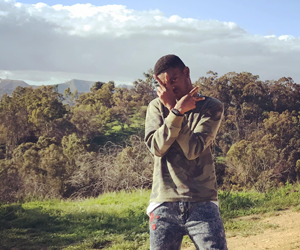Entertainment
Ferguson and Beyond Examines a Decade of Social Upheaval Through Art
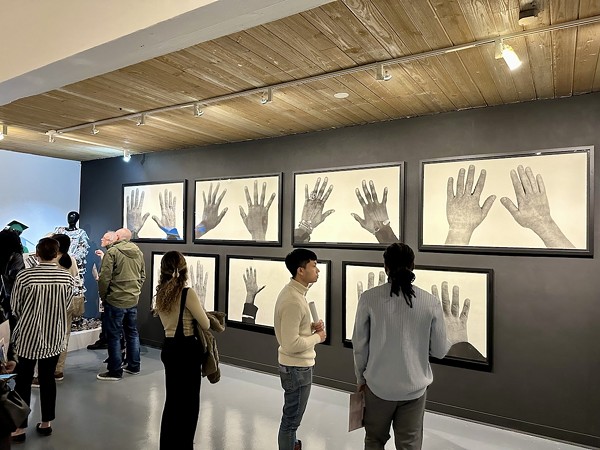
Last Friday evening, scores of artists, academics and community members filed inside the intimate, narrow halls of Webster University’s Hunt Gallery for the unveiling of an art show centered on St. Louis’ tumultuous racial history. Ferguson and Beyond: Artistic Responses to a Decade of Social Upheaval, open now through April 26, is at once a glimpse back in time and a mirror of the present moment. As we approach the 10th anniversary of the Ferguson Uprising, the exhibition urges viewers to contemplate the fatal shooting of Michael Brown Jr. by police officer Darren Wilson and the outpouring of protests and social activism that ensued as a result, both locally and around the world. It asks critical questions: What progress has been made? What work is left to be done? The gallery is adorned with paintings, photography, sculptures, videos and poetry by artists of color whose deeply personal work is informed by their lived experience. Notable contributors include Damon Davis, Lillian Gardner, Cheeraz Gormon, William Morris, Jon Henry, Yvonne Osei and more. “Many of the artists were in the streets of Ferguson,” Terri Reilly, Webster professor and co-curator of the exhibition told attendees on Friday. “Their art asks us to reflect and then act.” Despite the gravity of the evening’s central topic, the atmosphere on opening night crackled with festive energy. Familiar faces exchanged warm embraces, a gentle chorus of “pardon me” punctuated the constant brushing of shoulders, and the soft clink of plastic cups filled with complimentary wine was something like a symphony. The energy shifted, however, as attendees gathered around the podium for the exhibition’s opening remarks. Every person in the room was eager to hear from two special guests: Michael Brown Jr.’s father, Michael Brown Sr., and stepmother Cal D. Brown. The Brown family speaks outWhen Cal D. Brown stepped up to the podium, a solemn reverence fell over the crowd. The already congested room squeezed tighter as folks vied for a better view. iPhones and cameras emerged to capture the moment, and I, too, edged closer to the front, tape recorder in hand. “Good evening,” Mrs. Brown said. The crowd echoed her greeting like a congregation at Sunday Mass. “August 1, 2014, Michael Brown, Jr. graduated from high school,” she continued. “He sat in a Chinese restaurant in Ferguson and he said, ‘The world will know my name. I’m going to shake the world. I may have to go away for a while, but I’m gonna come back and heal my city.’” We know the end of this story all too well. Eight days later, on August 9, 2014, the unarmed 18-year-old was shot and killed after an encounter with Officer Wilson in Ferguson. Mrs. Brown concluded, “When I stand in spaces like this, I’m reminded of the words that he said himself.” click to enlarge COURTESY WEBSTER UNIVERSITY Michael Brown Sr. spoke at the exhibit’s opening reception.
Amidst applause and heartfelt grunts of approval, Michael Brown Sr. took center stage. He spoke about the work he and his wife are doing at the Michael Brown Sr. Chosen For Change Organization, a nonprofit he founded to support grieving families impacted by gun violence and police terror. The Browns are part of a growing number of families who, after losing a loved one to state violence, have decided to turn their pain into purpose by taking on roles as advocates, running foundations in their loved one’s honor, and accompanying other impacted families in establishing communities of healing. But the pain of losing one’s child never truly goes away. “It’s hard to bounce back after losing your loved one,” Brown Sr. said. “I struggle every day missing Mike. It’s ten years now, and it still feels like the same year everything happened. Personally, I don’t think too much has changed, but we got a whole lot of work to do. I’m standing here telling you I’m gonna stand with the people who want to do the work.” Brown Sr.’s voice carried conviction born of experience. Though his sincerity was undeniable, it was clear he had delivered retellings of his family’s tragedy hundreds of times before. Perhaps that is what it has taken to get people to listen. The Brown family’s sentiments underscore the main message of Ferguson and Beyond: that there remains an urgent need for collective action to address the root causes of violence and inequality in our communities. But how is art going to help us get us there? How art helps us move through Ferguson and beyond“Through every period of societal turmoil, regardless of place, artists have played a pivotal role in reflecting and shaping public discourse through their work,” Reilly writes in “Ferguson and Beyond: A Collective Undertaking,” an essay accompanying the exhibition. “Their work ignites change, challenges societal norms, fosters a collective consciousness, and asks the viewer to reflect, question, and collectively act against injustice.” Reilly draws parallels between the artistic community’s response to the deaths of Michael Brown Jr. and George Floyd and the historic Black Arts Movement of the 1960s and 1970s. Both movements arose during a time when Black people around the world were engaged in struggles for liberation and equality and sought to promote Black determination and pride through cultural production. click to enlarge ANGELO VIDAL A series of photographs from the collection of the Missouri Historical Society and its African American History Initiative offer a glimpse at the events of August 2014.
Damon Davis’ All Hands on Deck, one of the works on display at the exhibition, is a prime example. Created during the 2014 protests, All Hands on Deck comprises photographs of black hands raised in the air, which Davis initially pasted onto boarded-up storefronts along West Florissant Avenue, where they shared space with other protest art. Images of the storefronts were broadcast around the world. Davis’ artwork transformed a signal of surrender (“hands up, don’t shoot”) into one of resistance and solidarity. “All Hands on Deck was my way of weaponizing art to create a counter-narrative centered on the unity and love I saw every time I went out to protest,” says Davis. “It sought to raise the morale of the protest community to continue the fight.” Davis and the rest of the artists showcased in Ferguson and Beyond form a collective coalition of people who demand change. “Hate wants us to stop. Injustice wants us to go home,” Reilly insists. “No. We must collectively act, and the work in this show is asking you to do that.” Ferguson and Beyond will be open at Webster University’s Cecille R. Hunt Gallery (8342 Big Bend Boulevard) through April 26 and is free to attend. The gallery is open Tuesdays and Thursdays, 10 a.m. tp 5 p.m., Wednesdays 9:30 to 11:30 a.m. and 2 to 5 p.m., and Fridays 2 to 5 p.m. For more info, visit webster.edu/art/hunt-gallery.php.
Subscribe to Riverfront Times newsletters.
Follow us: Apple News | Google News | NewsBreak | Reddit | Instagram | Facebook | Twitter | Or sign up for our RSS Feed
Entertainment
Back to the Future, Meet Me in St. Louis to Play on Art Hill This Summer
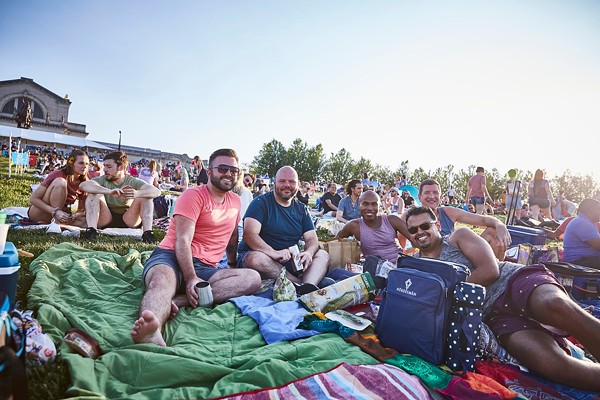
Saint Louis Art Museum will go back to the past this summer — with two fan favorites making encore presentations at its beloved Art Hill film series.Those films, Back to the Future and Meet Me in St. Louis, were voted on by fans. The sci-fi comedy classic will be screened on July 12 and the Judy Garland musical on July 19.Both programs begin at 6 p.m. with food trucks curated by Sauce Magazine. Parking is free and so is admission to the films, with seating on a first-come, first-served basis. People are invited to pack their own picnics if they prefer. The films begin each night at 9 p.m. Keep an eye on Saint Louis Art Museum’s Facebook, Instagram and slam.org for details in the case of inclement weather. But if the weather cooperates, you’ll want to plan to meet your fellow film fans in St. Louis — and make that the Saint Louis Art Museum while you’re at it. Subscribe to Riverfront Times newsletters.Follow us: Apple News | Google News | NewsBreak | Reddit | Instagram | Facebook | Twitter | Or sign up for our RSS Feed
Entertainment
The Trees I’ve Loved — and Lost
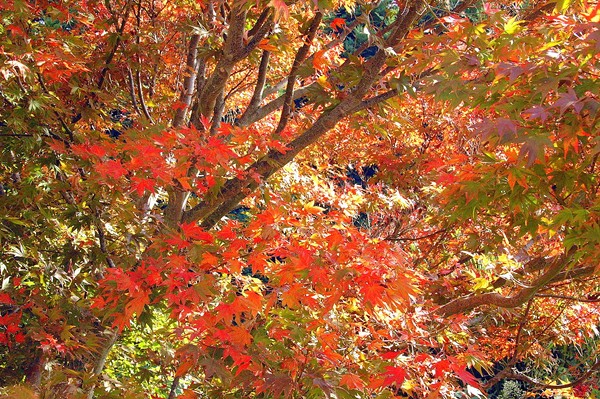
My neighbor told me she plans to cut down her tree and my heart stopped. The tree in question is an enormous Japanese maple that covers her yard and spills into my own. In the spring, it splashes a rich red across my bathroom window, and the tree has become such an integral part of my home that I can barely imagine life without it. Besides, I am still smarting from the loss of the mimosa tree at the end of my block. The silky, pink blooms sprung to life each May and stuck around until August, perfectly complementing the mint green paint on the adjacent garage. It was cut down without fanfare last year. I imagine my neighbors enjoy the unobstructed space for their patio table and lawn chairs, but when I look at their yard, I only see what’s missing.
The prospect of losing the maple with Arbor Day just around the corner flooded my mind with memories of other trees that have touched my life. I grew up in a pecan-orchard-turned-subdivision in Arlington, Texas, where the tree branches reached across the road to form a green tunnel that shaded your car as you weaved through the neighborhood. Visitors commented, but I never noticed. I wasn’t what you would call “outdoorsy.” I was a suburban girl, more inclined towards a trip to the mall than a walk in the park. What I did notice were the grocery bags full of pecans that my family harvested each year from the tree in our front yard alone. My dad even had a contraption for picking up the nuts without bending over—imagine a slinky on a broomstick and you get the picture.
Sometimes, I was taken outdoors against my will. On a camping trip when I was eight, my friend’s mom invited us to play a game. She took us into a field, blindfolded us and introduced each of us to a tree that we were to learn by touch. She then brought us back to the field, restored our sight and let us loose to find our tree. For the rest of the trip, I smiled each time I saw “my” tree and brought home a sketchbook filled with its portraits.
Growing up didn’t do much for my love of nature, but I did have a favorite tree at my San Antonio university. The campus was known for its sprawling live oaks donated by the Sears, Roebuck and Company in 1960 and its Champion Mexican sycamore that stood 70 feet tall. The tree I loved was not so fancy. I don’t even know what kind it was, only that it sat in a concrete grid behind the dining hall among eight other nearly identical trees. But this one was so perfectly symmetrical that it delighted the eye and stood out among its peers. So devoted was I to this tree, I did a photo shoot with it when I graduated, back when that required a real camera and actual film.
In Southern California, I met the jacaranda. The bright lavender blooms line the streets of Los Angeles and Orange County in the spring and the fall. They always reminded me of that Robin Williams movie What Dreams May Come, the sad one in which he ventures into his wife’s paintings after her suicide. Subject matter aside, walking among jacarandas feels like walking into a painting, and when its flowers fall it looks like purple rain.
I once attended a funeral for a tree in San Francisco. I never knew the tree, but my neighbors did and were devastated by the loss. My husband mourned a different tree. Perhaps you remember it? The Keebler Elf Tree in Tower Grove Park had a burly trunk with a tiny door-like opening that beckoned to those who believe in magic. Its branches dipped low to the ground and swept up again, inviting intrepid readers to perch and lose themselves in other worlds. Once it was marked for destruction, children’s drawings appeared like talismans on the fence that surrounded it. All that love couldn’t save the tree. Its legacy lives on, though, commemorated on Schlafly beer cans. Like so many Saint Louisans, my husband still misses that tree. He says “losing a tree is like losing a friend.”
Today is Arbor Day, a day to celebrate and plant trees. The first U.S. Arbor Day took place in Lincoln, Nebraska, in 1872. Citizens planted over one million trees. If we attempted that feat in St. Louis today, where would we put them? Would we confine the trees to our parks and the Missouri Botanical Garden? Or would we use them to shade our parking lots, schools and homes and give some life to the luxury apartments popping up like weeds with no landscaping in sight? What trees have made your life better and what trees are worth fighting for?
I can’t stop thinking about the Japanese maple. Perhaps I pay closer attention knowing its days are numbered, but I hate to think this is the last season I will see sun dappling through its leaves. In my neighbor’s defense, the tree takes up her entire yard. In the tree’s defense, it is so, so beautiful. I guess I’m a nature lover after all.
The RFT welcomes short essays on topics of local interest. Contact [email protected] if you’ve got something to say.
Subscribe to Riverfront Times newsletters.Follow us: Apple News | Google News | NewsBreak | Reddit | Instagram | Facebook | Twitter | Or sign up for our RSS Feed
Entertainment
Esquire Names St. Louis’ 21c Museum Hotel One of 2024’s Best New Hotels
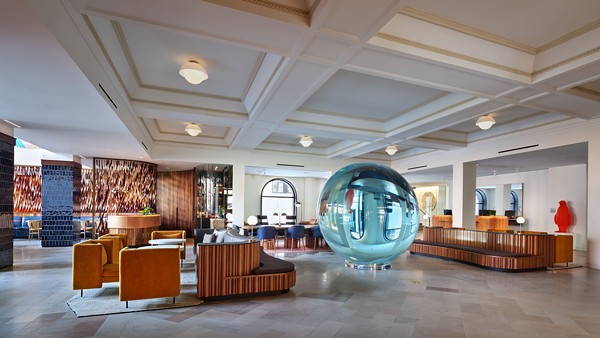
St. Louis’ 21c Museum Hotel was named one of the “41 Best New Hotels in North America and Europe 2024” by Esquire last month.
21c Museum Hotel (1528 Locust Street) opened last year in Downtown West in the city’s old YMCA building. While nodding to the building’s past by keeping the gym’s flooring, a renovated iteration of the YMCA’s lap pool (now the Locust Street Athletic and Swim Club), keeping the wood paneling and more, the hotel offers luxurious rooms, art galleries, a top-notch bar and incredible, immersive art throughout.
In its article, Esquire says, “It changes the way you think about art, hotels, and, hell, St. Louis itself.”
click to enlarge 21c Museum Hotel St. Louis The second floor hosts a large gallery space that debuted with a group exhibition, Revival: Digging Into Yesterday, Planting Tomorrow, that will be on display through June of next year.
The item also talks about the restored basketball court art gallery, which features artists Kehinde Wiley, Esiri Erheriene-Essi and Simone Elizabeth Saunders, as well as 21c’s free 24/7 museum, the restaurant Idol Wolf and the way history shines throughout the hotel. “Touches throughout nod to St. Louis’s former glory, including a magnificent Renaissance Revival pool, while the life that thrums through the lobby bar points to the city’s promising future,” the writers say.All that and one of the second-least expensive pricepoint on the list? We’ll take more press like this, please!
For more information on the 21c Museum Hotel read the RFT’s “21c Museum Hotel Dazzles in St. Louis’ Old Downtown YMCA Building” or visit 21c’s website.
Email the author at [email protected]
Subscribe to Riverfront Times newsletters.Follow us: Apple News | Google News | NewsBreak | Reddit | Instagram | Facebook | Twitter | Or sign up for our RSS Feed
-

 Entertainment1 year ago
Entertainment1 year agoSt.Louis Man Sounds Just Like Whitley Hewsten, Plans on Performing At The Shayfitz Arena.
-
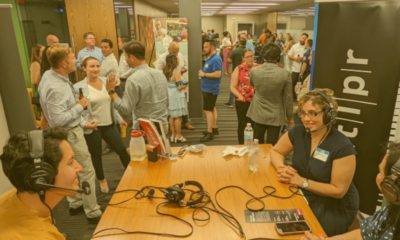
 Business1 year ago
Business1 year agoWe Live Here Auténtico! | The Hispanic Chamber | Community and Connection Central
-
Board Bills1 year ago
2022-2023 Board Bill 189 — Public Works and Improvement Program at the Airport
-

 Local News1 year ago
Local News1 year agoVIDEO: St. Louis Visitor Has Meltdown on TikTok Over Gunshots
-
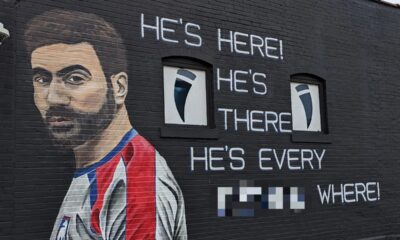
 News1 year ago
News1 year agoTed Lasso-inspired pop-up bar now open in St. Louis
-
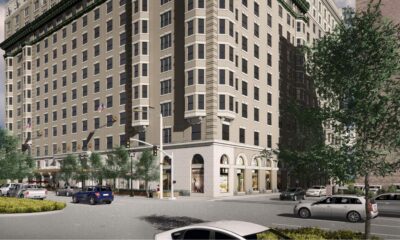
 Board Bills1 year ago
Board Bills1 year ago2022-2023 Board Bill 165 — Jefferson Arms Community Improvement District
-
Board Bills1 year ago
2022-2023 Board Bill 183 — Amending Ordinance Number 62885 known as the Capital Improvements Sales Tax
-
Board Bills1 year ago
2022-2023 Board Bill 180 — Right to Counsel for Tenants Facing Eviction


